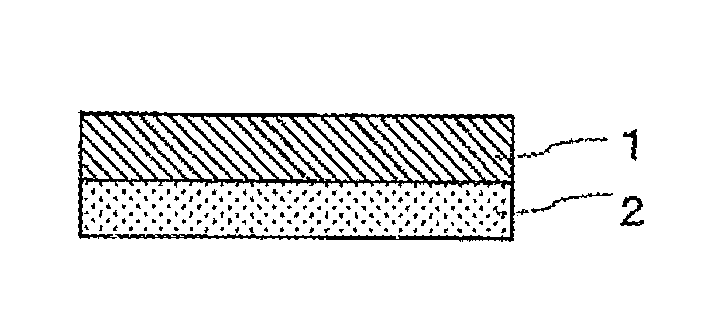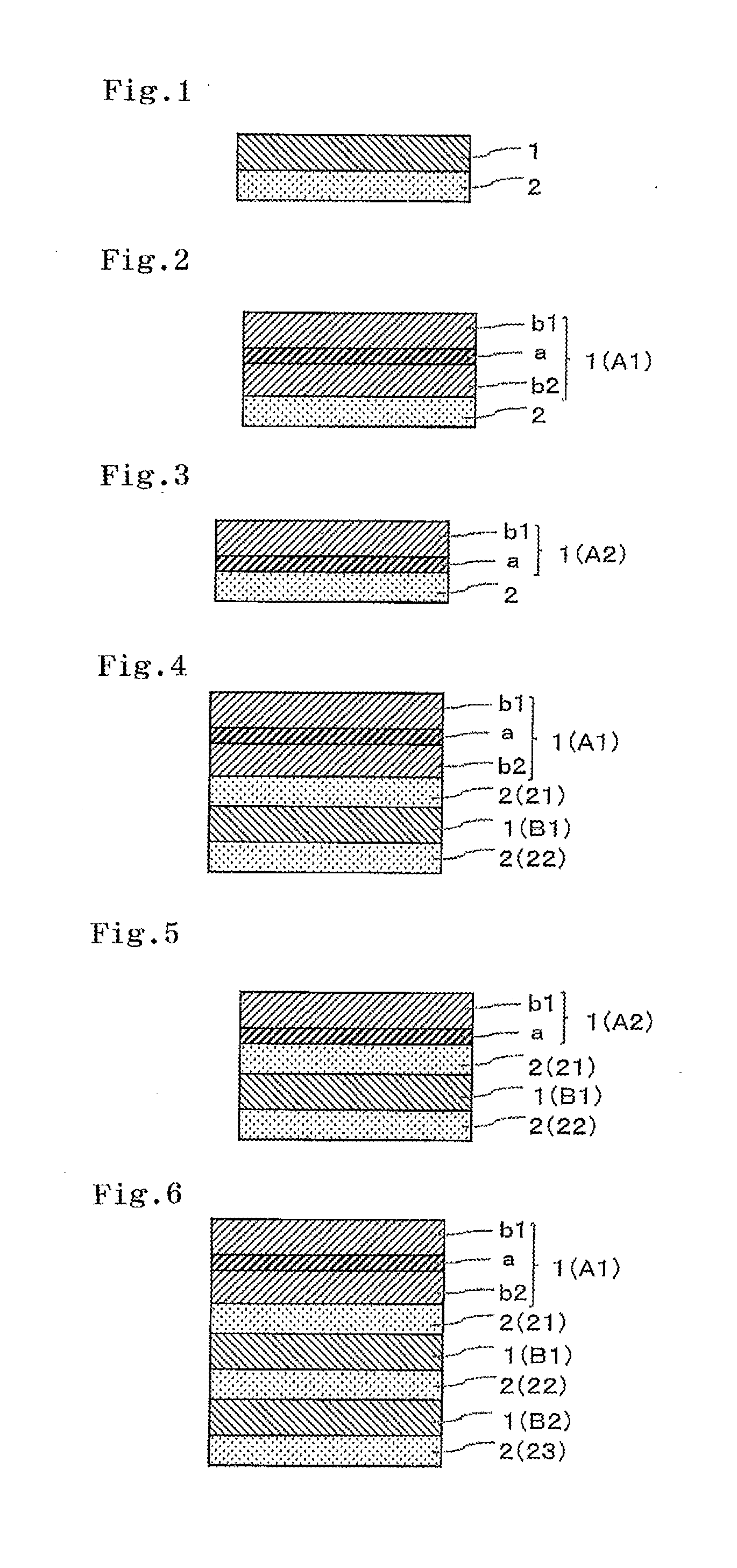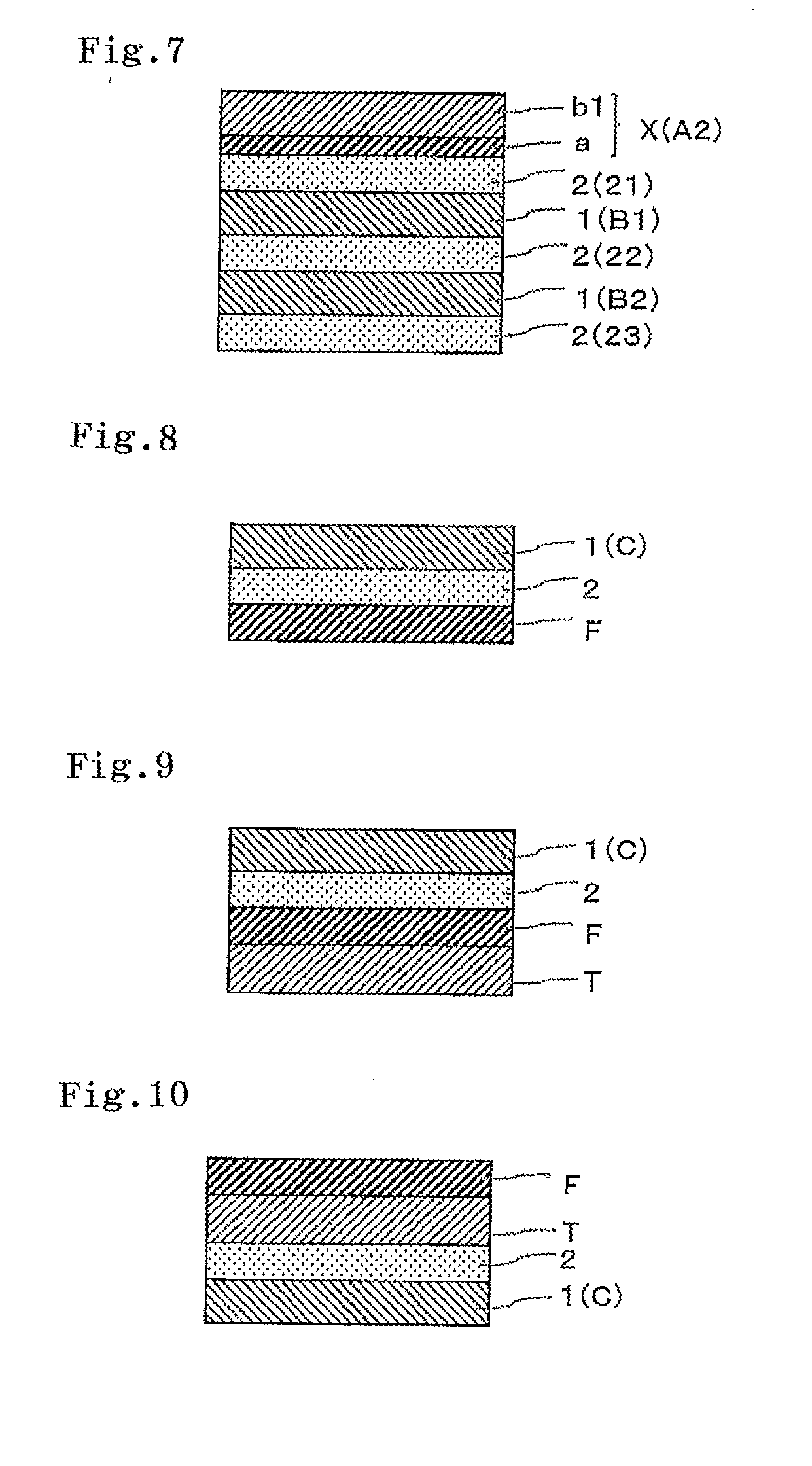Adhesive optical film, manufacturing method for the same and image display device using the same
a technology of adhesive optical film and manufacturing method, which is applied in the direction of film/foil adhesives, polarizing elements, instruments, etc., can solve the problems of inability to form a pressure-sensitive adhesive layer, inability to reduce the thickness of the polarizing plate or the pressure-sensitive adhesive layer, and inability to achieve pressure-sensitive adhesive layer formation, etc., to achieve low thickness and reduce unevenness. , the effect of low level of irregularities
- Summary
- Abstract
- Description
- Claims
- Application Information
AI Technical Summary
Benefits of technology
Problems solved by technology
Method used
Image
Examples
reference production example 1
(Process of Preparing Laminate)
[0142]The resin substrate used was an amorphous polyethylene terephthalate film (NOVACLEAR manufactured by Mitsubishi Plastics, Inc.) with a glass transition temperature of 80° C. A laminate film including the resin substrate and a polyvinyl alcohol layer was prepared as follows. First, the resin substrate was provided, which had a thickness of 100 μm. An aqueous solution of polyvinyl alcohol (NH26 manufactured by The Nippon Synthetic Chemical Industry Co., Ltd.) was then applied to the resin substrate. A 12-μm-thickpolyvinyl alcohol layer was formed by drying the applied solution at a temperature of 60° C. As a result, a laminate film was obtained.
(Insolubilization Process)
[0143]The resulting laminate film was immersed in an aqueous boric acid solution at a temperature of 30° C. for 30 seconds. The aqueous boric acid solution contained 4 parts by weight of boric acid and 100 parts by weight of water.
(Dyeing Process)
[0144]The prepared laminate film was...
reference production example 2
[0149]The resin substrate used was a polymethylpentene film (TPX manufactured by Mitsui Chemicals, Inc.) with a glass transition temperature of 30° C. Using a process similar to that of Reference Production Example 1, Reference Production Example 2 was performed in which a laminate film including the resin substrate and a polyvinyl alcohol layer (7 μm in thickness) containing adsorbed iodine was longitudinally and uniaxially stretched to an extent just before breaking point by allowing it to pass through a plurality of sets of rollers different in circumferential speed in an aqueous boric acid solution containing boric acid and potassium iodide at a temperature of 60° C. In this process, the stretch ratio (maximum stretch ratio) was 5.5 times.
[0150]As used herein, the phrases “just before breaking point” and the “maximum stretch ratio” mean a stretch ratio about 0.2 (times) lower than the breaking stretch ratio determined in advance as in the case of Reference Production Example 1. ...
example 1
(Preparation of Polarizing Plate)
[0323]A polarizing plate was prepared by bonding 40-μm-thick triacetylcellulose films (KC4UY manufactured by Konica Minolta Holdings, Inc., 0.3% in haze value) as first and second transparent protective films to both sides of the polarizer (1) with an polyvinyl alcohol-based adhesive.
(Preparation of Pressure-Sensitive Adhesive Coating Liquid)
[0324]The solution of the acrylic pressure-sensitive adhesive (1) prepared in Production Example 1 was diluted with ethyl acetate to a solid concentration of 15%, so that a pressure-sensitive adhesive coating liquid was obtained. The pressure-sensitive adhesive coating liquid had a viscosity of 65 P.
(Preparation of Pressure-Sensitive Adhesive Polarizing Plate)
[0325]The pressure-sensitive adhesive coating liquid prepared as described above was applied to one side of a 38-μm-thick, silicone-treated, polyethylene terephthalate (PET) film (MRF38 manufactured by Mitsubishi Polyester Film) with a fountain die coater so...
PUM
| Property | Measurement | Unit |
|---|---|---|
| thickness | aaaaa | aaaaa |
| haze | aaaaa | aaaaa |
| thickness | aaaaa | aaaaa |
Abstract
Description
Claims
Application Information
 Login to View More
Login to View More - R&D
- Intellectual Property
- Life Sciences
- Materials
- Tech Scout
- Unparalleled Data Quality
- Higher Quality Content
- 60% Fewer Hallucinations
Browse by: Latest US Patents, China's latest patents, Technical Efficacy Thesaurus, Application Domain, Technology Topic, Popular Technical Reports.
© 2025 PatSnap. All rights reserved.Legal|Privacy policy|Modern Slavery Act Transparency Statement|Sitemap|About US| Contact US: help@patsnap.com



